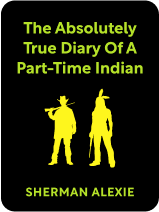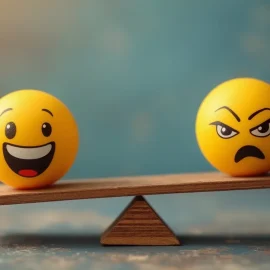

This article is an excerpt from the Shortform summary of "The Absolutely True Diary of a Part-Time Indian" by Sherman Alexie. Shortform has the world's best summaries of books you should be reading.
Like this article? Sign up for a free trial here .
Is racism in education a serious problem today? Are there examples of institutional racism in education in the book The Absolutely True Diary of a Part-Time Indian?
In The Absolutely True Diary of a Part Time Indian, racism in education is evident in both of Junior’s schools. Junior remarks on issues with the school on the reservation, and struggles he faces as a Native American when he goes to a nearby white school.
Keep reading to see examples of racism in education in the book The Absolutely True Diary of a Part Time Indian.
Junior’s First Day of High School: Example of Racism in Education
Junior loves to learn and is excited about being a freshman at Wellpinit High and finally getting to take geometry. His teacher is Mr. P, a white man who has a reputation for occasionally forgetting to come to class. This happens when he falls asleep in front of the TV at night. In these situations, a student has to go find him in the morning. It’s not unusual for Mr. P to come to school in his pajamas.
All the teachers at Wellpinit live on the reservation, even though they’re white. Junior divides the teachers into two categories: “liberal, white, vegetarian do-gooders” and “conservative, white missionary saviors.” They all want to “save” their Indian students, all except Mr. P. He doesn’t seem to fall into either category. Either way, the difference shows that racism in education is still prevalent on the reservation.
Junior’s so excited about learning geometry that he opens his textbook to kiss it as a sign of devotion to the subject. As he leans in, he sees “Agnes Adams” written on the inside cover. Agnes Adams is Junior’s mom.
With horror, Junior realizes that the book he’s holding is at least thirty years old. To him, the fact that his tribe is so poor that students have to use the same books their parents did is the “saddest thing in the world.” He feels his hopes for the class, and for his life, evaporate.
Without really understanding why, Junior suddenly hurls the textbook across the room, hitting Mr. P in the face and breaking his nose.
Junior is suspended from school. This is the first time he’s ever gotten into trouble in his life. His parents tell him how disappointed in him they are and his grandmother just cries and cries in her rocking chair.
Mr. P’s Visit
A week into his suspension, Junior is sitting on his front porch when Mr. P comes to visit. Junior apologizes for breaking his teacher’s nose. To Junior’s surprise, Mr. P says he’s sorry that the school suspended Junior. This makes Junior nervous—Why is Mr. P being so nice to him?
Mr. P tells Junior that even though hitting him with the book is the worst thing Junior has ever done, that he has forgiven Junior. Not only has he forgiven Junior, but he also feels he owes Junior an apology. Mr. P says that when he first started teaching on the reservation, he beat students. This was a common practice. All the teachers had been taught to “kill the Indian to save the child,” to beat all of the Indian’s culture out of him. Mr. P says he can’t apologize to all his former students, but he can apologize to Junior.
Then Mr. P tells Junior that he doesn’t want him to turn out like his sister, Mary. Mary was a star, a brilliant writer, who faded gradually until she became practically invisible, a recluse. Mr. P is determined that Junior won’t fade away. He tells Junior he’s the smartest kid in the school and that he deserves better than what the school can give him. In this way, he hopes Junior can overcome institutional racism in education.
Mr. P tells Junior to say it out loud: “I deserve better.” But Junior can’t say it. How can he say it when he doesn’t believe it? At this point, Junior starts to cry. He’s baffled by this teacher, this white man, who’s telling him that he deserves the world.
Mr. P says he has one more thing to say to Junior, but Junior has to promise not to repeat it to anyone: “You have to leave this reservation.”
Mr. P is suddenly angry. He says that every white person on the reservation deserves to be hit in the face with a book, but that every Indian deserves it, too. The only thing that white teachers and Indian parents are teaching reservation kids is how to give up. Now it’s Mr. P who’s crying. He says that Junior threw the book because a small part of him refuses to give up. But if Junior stays on the rez, that part of him, that resilience, will be snuffed out. Mr. P tells Junior to take his hope and find others who have hope. To grow his hope, Junior needs to “multiply hope by hope.” And the further Junior goes from the hopeless reservation, the more hope he’s likely to find.
Petrified Wood
Junior continues to feel like he’s split in two: He wakes up as an Indian (Junior) and arrives at Reardan as a nobody (Arnold). No one talks to him or even looks at him. He eats lunch by himself and plays catch with himself during P.E.
On the plus side, Junior discovers that he’s smarter than almost everyone in the school. For instance, one day in geology class, the teacher marvels at how amazing it is that wood can turn into rock. Junior raises his hand, for the first time ever at Reardan, to correct his teacher, telling him that petrified wood isn’t actually wood.
Junior’s classmates are shocked that he’s bold enough to contradict a teacher, and the teacher is angry and indignant, telling Junior that if he’s so smart, he should tell the class how it works. Junior does, explaining that minerals take the place of wood molecules, so there’s no wood left by the time it has become “petrified wood.”
In an example of institutional racism in education, the teacher doesn’t believe Junior and mocks his shoddy reservation education, but Gordy, the class genius, raises his hand to confirm that Junior is right. Even the teacher knows that if Gordy says petrified wood isn’t actually wood, he’s right. The teacher thanks Gordy for sharing this interesting fact, ignoring Junior completely. Meanwhile, Junior thinks longingly of the days when he was treated like a human being and his teacher told him he was smart and deserved the world.
After class, Junior thanks Gordy for sticking up for him, but Gordy says he was sticking up for science, not Junior.
That night, Junior rides the bus to the end of the rez, where the line stops. As usual, he waits exactly thirty minutes for his father to pick him up, and when his father doesn’t show, Junior starts walking home. Often, Junior’s able to hitch a ride with someone, but three times, he’s had to walk the full 22 miles from the bus stop home.

———End of Preview———
Like what you just read? Read the rest of the world's best summary of Sherman Alexie's "The Absolutely True Diary of a Part-Time Indian" at Shortform .
Here's what you'll find in our full The Absolutely True Diary of a Part-Time Indian summary :
- How Junior gets split between two worlds when he goes to a mostly white school
- How Junior overcomes being an outsider to being part of welcoming social circles
- The tragedies of alcoholism and poverty that leave Junior with renewed strength






